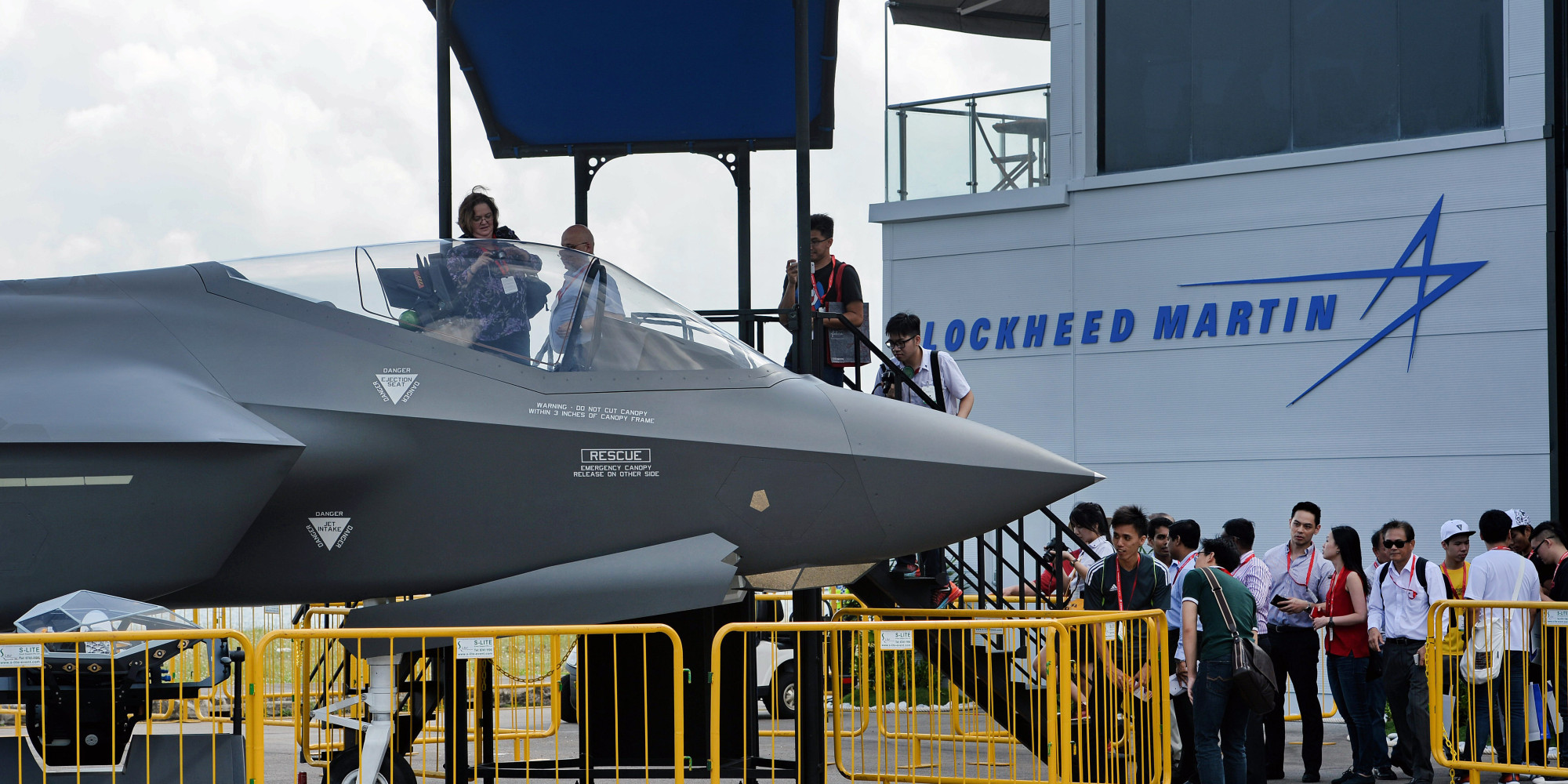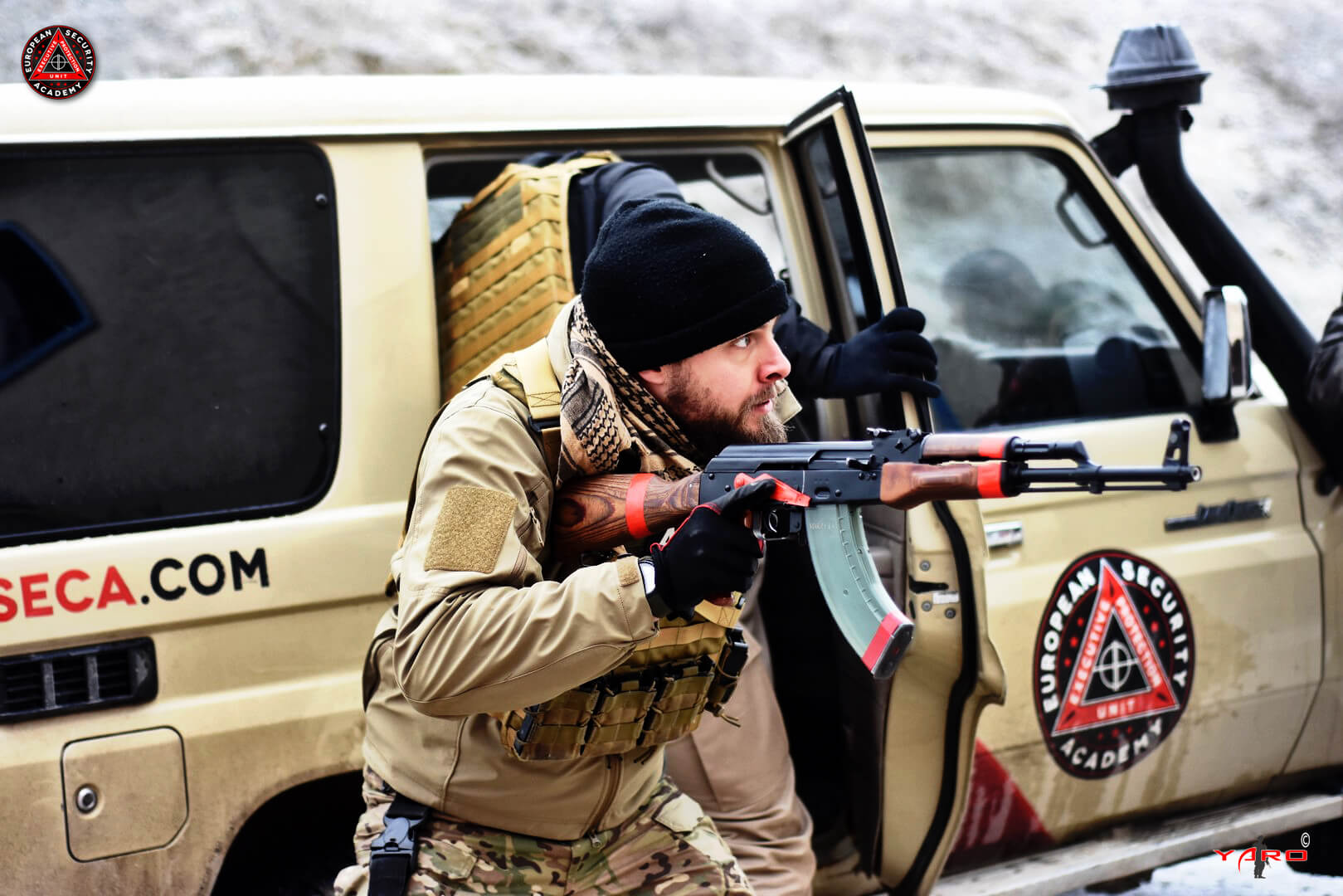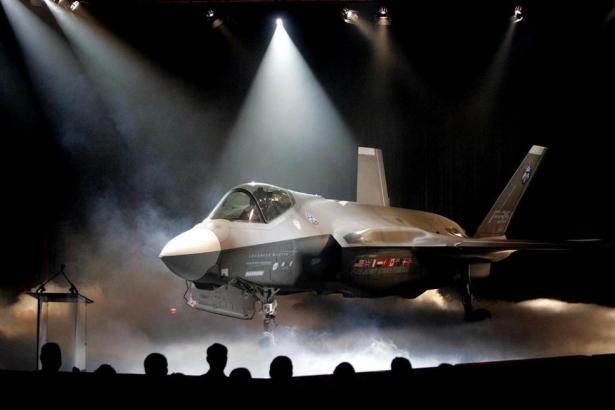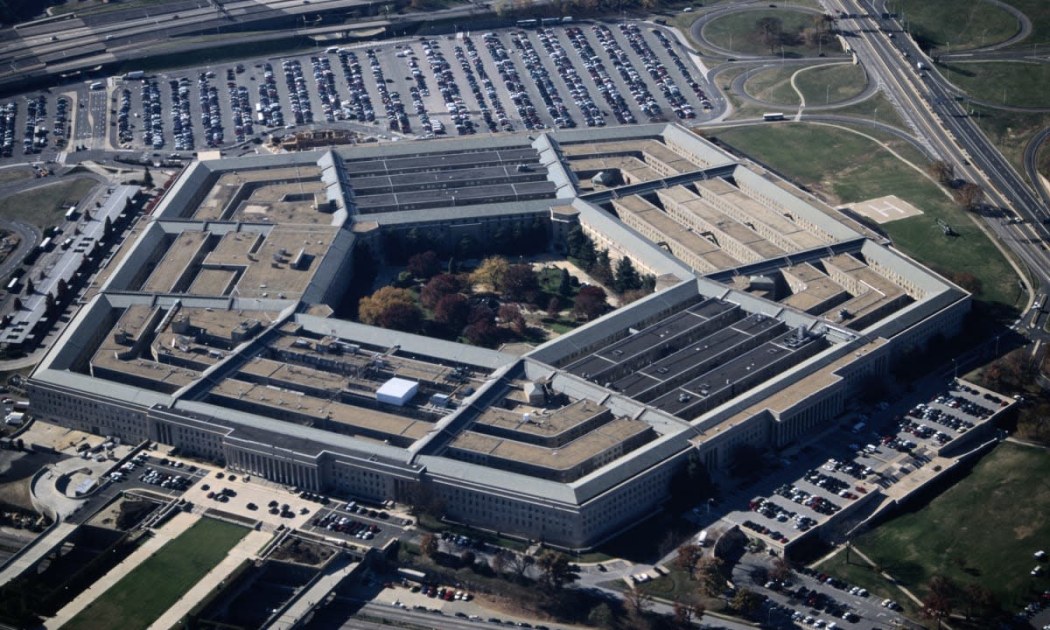
Corporate Beneficiaries of the Post-9/11 Pentagon Spending Surge
William D. Hartung / Center for International Policy
Introduction
(September 13, 2021) — The United States government’s reaction to the terrorist attacks of September 11, 2001 led to dramatic increases in Pentagon funding and revenues for weapons contractors. While the costs and consequences of America’s war policies of the twenty-first century have been well-documented, the question of who has profited from this approach has received less attention.
Corporations large and small have been, by far, the largest beneficiaries of the post-9/11 surge in military spending. Since the start of the war in Afghanistan, Pentagon spending has totaled over $14 trillion, one-third to one-half of which went to defense contractors. Some of these corporations earned profits that are widely considered legitimate. Other profits were the consequence of questionable or corrupt business practices that amount to waste, fraud, abuse, price-gouging or profiteering.
The Pentagon’s increasing reliance on private contractors in the post-9/11 period raises multiple questions of accountability, transparency, and effectiveness. This is problematic because privatizing key functions can reduce the US military’s control of activities that occur in war zones while increasing risks of waste, fraud and abuse. Additionally, that the waging of war is a source of profits can contradict the goal of having the US lead with diplomacy in seeking to resolve conflicts.
More broadly, the outsized influence of defense contractors has resulted in a growing militarization of American society. This is manifested in everything from the Pentagon’s receipt of the lion’s share of the federal discretionary budget — more than half — to the supply of excess military equipment to state and local law enforcement agencies.
This report reviews the major sources of corporate profit tied to America’s post- 9/11 wars, as well as other factors driving the enormous surge in military spending during the first two decades of this century, including the growth in the global arms trade, the recent focus on construing China as a threat, and large Pentagon budgets.

The Post-9/11 Spending Surge
The political climate created by the “Global War on Terror” (GWOT), as it was referred to in the early 2000s, set the stage for large increases in the Pentagon budget, much of which went to military contractors. This spending surge included increases in the base budget — the portion of the budget not strictly related to ongoing conflicts — as well as trillions in spending on the US’ post-9/11 wars. The base budget is relevant to sustaining a large military with global reach, including over 800 overseas military bases, and massive nuclear weapons capacity. The increases in the base budget have been over and above the $2 trillion in direct costs of the wars themselves that were expended through the Pentagon’s Overseas Contingency Operations (OCO) account.
The Pentagon budget — the base budget plus the OCO account — increased by over 10 percent in the first year after the 9/11 attacks and the commencement of the war in Afghanistan. The Pentagon budget ultimately increased year after year for 10 years running, an unprecedented occurrence in US history. Pentagon spending peaked in 2010 at the highest level since World War II — over $800 billion in 2021 dollars. This figure was substantially more than the US spent on its military at the height of the Korean or Vietnam Wars or the Reagan buildup of the 1980s.

“The Purse is Now Open”:
The Post-9/11 Flood of Military Contracts
The magnitude of Pentagon spending in the wake of the 9/11 attacks was remarkable. The increase in US military spending between Fiscal Year 2002 and Fiscal Year 2003 was more than the entire military budget of any other country, including major powers like China, Russia, the United Kingdom, Germany, and France. And in the new political climate, increases in Pentagon spending reached well beyond expenditures specifically tied to fighting the wars in Iraq and Afghanistan. As Harry Stonecipher, then Vice President of Boeing, told The Wall Street Journal in October 2001, “the purse is now open . . . any member of Congress who doesn’t vote for the funds we need to defend this country will be looking for a new job after next November.”
Stonecipher’s prophesy of rapidly rising Pentagon budgets proved correct. Adjusted for inflation, Pentagon spending grew by nearly one-third from 2001 to 2010. Military spending has come down slightly since 2010, but remains at historically high levels. The Biden administration’s latest proposal for spending on the Pentagon and related defense work like nuclear warhead development at the Department of Energy topped $753 billion for FY2022.
Total Pentagon expenditures for all purposes since Fiscal Year 2001 have topped $14.1 trillion (measured in 2021 dollars). Of this sum, $4.4 trillion went for weapons procurement and research and development (R&D), categories that primarily benefit corporate contractors. The remaining funds went to pay and benefits for military and civilian personnel and supporting expenditures needed to operate and maintain the US military. The $4.4 trillion figure is a conservative estimate of the pool of funding Pentagon contractors have drawn from in the two decades since 9/11. The Pentagon’s massive budget for operations and maintenance (O&M) also subsidizes contractors, but it is harder to determine what share of this category goes to private firms.
The benefits of the post-9/11 surge in Pentagon spending have been highly concentrated. One-quarter to one-third of all Pentagon contracts in recent years have gone to just five major weapons contractors: Lockheed Martin, Boeing, General Dynamics, Raytheon, and Northrop Grumman.
“One-quarter to one-third of all Pentagon contracts in recent years
have gone to just five major weapons contractors: Lockheed Martin,
Boeing, General Dynamics, Raytheon, and Northrop Grumman.”
These five companies received over $286 billion in contracts in Fiscal Year 2019 and Fiscal Year 2020 alone (see Table 1). From FY 2001 to FY 2020 these five firms alone split over $2.1 trillion in Pentagon contracts (in 2021 dollars). To put these figures in perspective, the $75 billion in Pentagon contracts received by Lockheed Martin in FY 2020 is well over one and one-half times the entire budget for the State Department and Agency for International Development for that year, which totaled $44 billion.

Who Benefits?
As indicated in Table 1, the biggest financial beneficiaries of the post-9/11 military spending surge have been major US-based weapons contractors. But weapons makers were far from the only beneficiaries. Companies benefiting from the buildup of the past 20 years range from weapons manufacturers like Raytheon and Lockheed Martin, to logistics and reconstruction firms like Kellogg, Brown and Root (KBR) and Bechtel, to armed private security contractors like Blackwater and Dyncorp.
As noted by Heidi Peltier in her analysis of the “camo economy,” roughly half of the Pentagon budget — $370 billion in 2019 — went to military contractors, for both war-related and ongoing peacetime activities. The Congressional Research Service estimates that in FY2020, the spending for contractors grew to $420 billion — well over half of the total Pentagon budget.
Three Ways to Profit
Companies profit from a war economy in at least three ways: logistics and reconstruction, private security contracting, and supplying weapons. As demonstrated below, numerous companies took advantage of wartime conditions — which require speed of delivery and often involve less rigorous oversight — to overcharge the government or engage in outright fraud.
Logistics and Reconstruction
The first way contractors have profited from the post-9/11 wars is through logistics and reconstruction work in the war zones. The chaos of war, the lack of adequate government oversight, and the sheer volume of funds poured into the reconstruction effort in a short time frame all contributed to an environment that enabled massive waste, fraud and abuse in the reconstruction efforts in Iraq and Afghanistan.
The best-known reconstruction and logistics contractor in Iraq and Afghanistan is Halliburton, through its Kellogg, Brown and Root (KBR) subsidiary. At the outset of the two wars, Halliburton was the recipient of the Pentagon’s Logistics Civil Augmentation Program (LOGCAP) contract, an open-ended arrangement that involved coordinating a wide array of support functions for troops in the field, from setting up military bases, to maintaining equipment, to providing food and laundry services. Halliburton’s Pentagon contracts grew more than tenfold from FY2002 to FY2006 on the strength of its contracts to rebuild Iraq’s oil infrastructure and provide logistical support for US troops in Iraq and Afghanistan. By August 2008 the company had received over $30 billion for work under the LOGCAP contract.
At the outset, Halliburton’s role was controversial, drawing considerable criticism in the press, from independent analysts, and from key members of Congress. The notion of privatizing logistics was initiated by Dick Cheney when he served as secretary of defense in the George Herbert Walker Bush administration in the early 1990s. An August 2000 essay in Mother Jones described the conflict of interest involved in contracting out wartime support services: “In 1992,” it said, “the Pentagon, then under Cheney’s direction, paid Texas-based Brown and Root Services $3.9 million to produce a classified report detailing how private companies — like itself — could help provide logistics for American troops in potential war zones around the world.”
Cheney went on to serve as the CEO of Halliburton, the corporate parent of Kellogg, Brown and Root, up until the point that he became the Vice-President in the George W. Bush administration in 2001. Cheney had stock holdings in the company worth $46 million, and as late as 2002 he received $162,000 in deferred compensation from the company. Cheney’s journey from the government to Halliburton and back was a classic case of the revolving door between the Pentagon and the defense industry, with all the real and potential conflicts-of-interest that entails.
Halliburton’s performance was another major source of criticism, as it was found to be dramatically overcharging for basic services and doing faulty work that put US troops at risk. It was far from the only company engaged in such activities, however.

Starting in 2004, a year into the Iraq war, the Special Inspector General for Iraq Reconstruction (SIGIR) — a congressionally mandated body designed to root out waste, fraud and abuse — and Congressional watchdogs like Rep. Henry Waxman (D-CA) exposed scores of examples of overcharges, shoddy construction, and outright theft by contractors engaged in the rebuilding of Iraq, but relatively few companies suffered significant financial or criminal consequences for what can only be described as war profiteering — taking advantage of the less rigorous oversight that obtained under wartime conditions to overcharge the government, including by engaging in criminal conduct.
An additional problem is that US contractors too often failed to make local residents integral to rebuilding projects, undermining the sustainability of these projects once the contractors left the scene. The Commission on Wartime Contracting in Iraq and Afghanistan estimated that waste, fraud and abuse in the two war zones as of 2011 had totaled $31 billion to $60 billion.
A few examples of wasteful spending in Iraq and Afghanistan give a sense of how business was conducted throughout the war period. In Iraq, one of the early scandals involved overcharging for fuel supplied to US forces by Kellogg, Brown and Root. In a December 2003 report — less than a year into the war — the Defense Contract Audit Agency (DCAA) documented “tens of millions” in overcharges by KBR, including charging more than twice what other suppliers were charging for fuel.
KBR’s fuel overcharges were followed a few years later by similar price gouging by a firm called International Oil Trading Company (IOTC), which received contracts worth $2.7 billion from the Defense Logistics Agency (DLA). An investigation by Rep. Henry Waxman (D-CA), chair of the House Government Oversight and Reform Committee, found that the firm had routinely overcharged the Pentagon for fuel it brought into Iraq, making over $200 million in profits on sales of $1.4 billion during the period from 2004 to 2008, over a third of which allegedly went to its owner Harry Sargeant III, who also served as the finance chairman of the Florida Republican Party.
Waxman summarized the situation as follows: “The documents show that Mr. Sargeant’s company took advantage of US taxpayers. His company had the only license to transport fuel through Jordan, so he could get away with charging exorbitant prices. I’ve never seen another situation like this.”
Cost overruns and poor performance characterized much of the work involved in rebuilding Iraq. Large US firms like Parsons and Bechtel were cited for inadequate and incomplete work on scores of projects involving everything from water projects to building schools and health clinics. According to a September 2006 New York Times account of an investigation by the Special Inspector General for Iraq Reconstruction, 13 of 14 projects carried out by Parsons in Iraq were “substandard, with construction deficiencies and other serious problems.” One of the projects involved the construction of a police college in Baghdad where “plumbing work was so poor that the pipes burst, dumping urine and fecal matter throughout the college’s buildings.”
A particularly egregious case of shoddy work that had tragic human consequences involved the electrocution of at least eighteen military personnel in several bases in Iraq beginning in 2004 due to faulty electrical installations, some of which were done by KBR and its subcontractors. An investigation by the Pentagon’s Inspector General found that commanders in the field had “failed to ensure that renovations… had been properly done, the Army did not set standards for jobs or contractors, and KBR did not ground electrical equipment it installed at the facility.”
Finally, the 2008 death of Staff Sgt. Ryan Maseth, a Green Beret who was electrocuted while showering in Iraq, brought Congressional and public attention to the issue. While KBR had inspected the building that Maseth died in and found “serious electrical problems” almost a year before his electrocution, KBR did not fix the identified problems. Notably, KBR’s contract did not require “fixing potential hazards.”

Former Halliburton official and Vice-president Dick Cheney.
A former KBR electrician accused other KBR contractors of falsifying documents to make it appear that they had fixed the previously identified grounding issues. Another former KBR electrician testified to the Senate that KBR used untrained or inexperienced electricians to do electrical work at a lower rate while billing the US government at the same rate used for experienced electricians. Lastly, in July 2008, a KBR electrician testified that the DoD had no oversight system for the electrical work, even after soldiers had been electrocuted.
KBR also profited from overcharges on food services for US troops in Iraq. Building dining facilities and providing meals at approximately 60 bases throughout Iraq made up a significant portion of KBR’s massive LOGCAP contract. In a May 2009 testimony before the Commission on Wartime Contracting, the Director of the Defense Contract Audit Agency (DCAA) testified that after auditing $1.2 billion of Dining Facility Costs (DFAC) from the KBR contract, the DCAA “took exception” to approximately $352 million of the total costs.
DCAA Director April Stephenson stated that the main reason for these “exceptions” was KBR’s practice of billing the US for many meals that were not actually provided. A DCAA Audit found that the number of meals KBR charged the government for could have been up to 36 percent greater than the accurate number. By February of 2004, KBR was forced to refund the US for $27.4 million of “potential over-billings” at dining facilities in Iraq and Kuwait.
KBR relied heavily on subcontractors, often in efforts to increase profits, at times through illegal maneuvers. The Commission on Wartime Contracting reported that KBR managers received kickbacks from a Kuwaiti subcontractor that was then awarded $700 million worth of additional dining facility subcontracts from KBR.
The Afghan reconstruction process also provided ample examples of fraud, waste, and abuse. Examples include a US-appointed economic task force that spent $43 million on a gas station that was never used, another $150 million on lavish living quarters for US economic advisors, and $3 million for patrol boats for the Afghan police that were also never used.
Perhaps most disturbingly, a Congressional investigation found that a significant portion of $2 billion worth of transportation contracts to US and Afghan firms ended up as kickbacks to warlords, police officials, or payments to the Taliban, sometimes as much as $1,500 per truck, or up to half a million dollars for each large convoy of 300 trucks. In 2009 then Secretary of State Hillary Clinton stated that “one of the major sources of funding for the Taliban is the protection money” paid from US transportation contracts.
As was the case with Halliburton’s KBR unit in Iraq, a number of companies cashed in on food services for troops in Afghanistan through fraudulent overcharges. In 2019, fraud charges against three former executives of Anham resulted in a $45 million been the primary food and water supplier of the US military in Afghanistan. The Justice count of conspiracy to violate the restrictions on doing business with Iran, four counts of substantive violations of those restrictions, and one count of conspiracy to commit international money laundering.” They were accused of creating a “Potemkin Village” construction site in order to overstate progress on a warehouse project. Despite this, the military removed a suspension that had prevented Anham from applying for US government contracts, thereby allowing the company to continue doing work for the Pentagon’s Defense Logistics Agency (DLA).
Two other contractors that have supplied the Defense Logistics Agency also faced serious allegations of fraud. Supreme Foodservice GmbH, which was the Defense Logistics Agency’s main supplier in Afghanistan before Anham, “fraudulently inflated the price” of local market ready goods and bottled water. Supreme pleaded guilty in 2014 to major fraud and paid almost $300 million in fines.
Notably, in 2011, shortly after the Afghan government began investigating Supreme and a recently retired DLA director, Lt. Gen. Robert T. Dail, joined the company, the DLA awarded a no-bid, $4 billion food-supply contract to Supreme — another case of the revolving door between the government and contractors. In fact, Lt. Gen. Dail awarded Supreme the DLA’s “New Contractor of the Year Award” just a few years before retiring from the military and joining Supreme.
In addition, the Department of Justice charged the logistics firm Agility (formerly known as Public Warehousing Company, or PWC) with fraud in 2010 and accused the company and its affiliates of overcharging the US Army for food that it transported to Iraq, Kuwait, and Jordan under contracts worth $8.5 billion. Agility ultimately resolved its criminal, civil, and administrative cases by paying $95 million to the US government. Maj. Gen. Dan Mongeon, another former director at the DLA, began working at Agility/PWC in 2006 and is the company’s president.

Private Security Contractors
The second stream of revenue for corporations tied to the war was for private security contractors, some of whom were involved in guarding US facilities and critical infrastructure like Iraqi oil pipelines.
The bulk of the contractors employed in the war zones — more than 60 percent — were engaged in support services such as serving meals, doing laundry, maintaining and repairing vehicles, and transporting fuel and equipment. Armed private security contractors involved in activities such as guarding embassies, serving as bodyguards, protecting oil pipelines and other infrastructure, and training, were a minority of total contractors deployed, peaking at about 10,500 in 2011.
But the impact of private security contractors was far greater than what those numbers might suggest. The use of private contractors reduces transparency and accountability for what happens in war zones, on occasion with disastrous results. The lack of transparency, with respect to the activities of private contractors, has been compounded by the Pentagon’s 2018 decision to stop reporting on the numbers of US troops engaged in combat overseas.
“The lack of transparency, with respect to the activities of private contractors, has been compounded by the Pentagon’s 2018 decision to stop reporting on the numbers of US troops engaged in combat overseas.”
The most notorious private security contractor was Blackwater, several of whose employees were involved in the 2007 massacre of 17 people in Baghdad’s Nisour Square. They opened fire on civilians in a crowded intersection while guarding a US Embassy convoy. The attack prompted ongoing legal and civil cases that continued until the Trump administration, when several perpetrators of the massacre were pardoned by President Trump.
In the wake of the shooting, Blackwater was rebranded several times, first as XE Services and then as Academii, and the firm eventually merged with Triple Canopy, another private contracting firm. Blackwater founder Erik Prince separated from the company but has since been involved in recruiting private mercenaries on behalf of the United Arab Emirates for deployment to the civil war in Libya, in violation of a United Nations arms embargo. Prince also made an unsuccessful proposal to the Trump administration to recruit a force of private contractors to be the backbone of the US war effort in Afghanistan.
Another task taken up by private firms was interrogation of Iraqi prisoners, including firms like Titan and CACI International that had interrogators and translators on the ground at Abu Ghraib, a site where Iraqi prisoners were brutally tortured.
In addition, a private firm, DynCorp, had lucrative contracts to train the Iraqi and Afghan police. In 2004, DynCorp was awarded a $2.5 billion contract to develop and train a new Iraqi police force from the State Department’s Bureau of International Narcotics and Law Enforcement Affairs (INL).56 By 2009, over half of DynCorp’s revenues were coming from the Iraq and Afghan wars. In late 2020, Dyncorp was acquired by Aumentum.
Dyncorp’s work with the Iraqi police was marked by corruption throughout. For example, in 2016, the Department of Justice alleged that DynCorp “knowingly submitted inflated claims in connection with a State Department contract to train Iraqi police forces.” The department announced in 2020 that DynCorp paid $1.5 million to settle fraud allegations that stemmed from a scheme in which DynCorp officials received kickbacks from subcontractors in return for Iraqi police training subcontracts. Two DynCorp employees were ordered to pay $3.4 million to the US for their participation in the kickback scheme. In 2011, DynCorp agreed to pay the US $7 million to settle a False Claims Act lawsuit which alleged that DynCorp submitted inflated charges to INL for work done under the Iraqi police contract.
In Afghanistan, DynCorp was a primary contractor on a $20 billion State Department program to train and develop the Afghan police force between 2002 and 2017. Although poor supervision by the State Department was a significant part of the problem, DynCorp bears some responsibility for the failure to help foster an effective Afghan police force during its tenure as the primary trainer.
The number of personnel deployed, and the revenues received by security and reconstruction contractors grew dramatically as the wars in Iraq and Afghanistan wore on. The Congressional Research Service estimated that by March 2011 there were more contractor employees in Iraq and Afghanistan (155,000) than there were US uniformed military personnel (145,000). In its August 2011 final report, the Congressionally mandated Commission on Wartime Contracting in Iraq and Afghanistan put the figure even higher, stating that “contractors represent more than half of the US presence in the contingency operations in Iraq and Afghanistan, at times employing more than a quarter-million people.
By 2010, only 30,000 of the 170,000 Afghans trained through the program were still on the police force. In addition, only 17 percent the districts the IG reviewed were able to carry out law enforcement operations independently and Ambassador Richard Holbrooke publicly stated that the Afghan National Police was “an inadequate organization, riddled with corruption.”
The number of personnel deployed, and the revenues received by security and reconstruction contractors grew dramatically as the wars in Iraq and Afghanistan wore on. The Congressional Research Service estimated that by March 2011 there were more contractor employees in Iraq and Afghanistan (155,000) than there were US uniformed military personnel (145,000). In its August 2011 final report, the Congressionally mandated Commission on Wartime Contracting in Iraq and Afghanistan put the figure even higher, stating that “contractors represent more than half of the US presence in the contingency operations in Iraq and Afghanistan, at times employing more than a quarter-million people.
While an armed contractor with a background in the Marines could earn as much as $200,000 per year in Iraq, the bulk of contractor employees were foreign workers from countries like Nepal or the Philippines or Iraqi citizens. These non-US personnel accounted for about three-quarters of the contractor work force, and they were also the most poorly paid, at times receiving as little as $3,000 per year. A 2017 analysis by Brown University’s Costs of War project documented “abysmal labor conditions” and major human rights abuses inflicted on foreign nationals working on US-funded projects in Afghanistan, as well as false imprisonment, theft of wages, and deaths and injuries in areas of conflict.
The number of contractors in Iraq and Afghanistan declined with the number of foreign troops deployed to these war zones, although at a somewhat slower rate. For example, by January 2021, there were roughly 2,500 troops total in Iraq and Afghanistan. This is less than one-tenth of the number of contractors employed in the war zones at that time. As the Congressional Research Service noted, “For the fourth quarter of fiscal year (FY) 2020, US Central Command (USCENTCOM) reported 43,809 contractor personnel working for DOD within its area of responsibility, which included 27,388 individuals located in Afghanistan, Iraq, and Syria.” In conjunction with the withdrawal of US troops from Afghanistan, the Biden administration has announced that US-funded private contractors will be leaving the country as well.
An additional cause for concern is the post-war drive of US contractors to seek more foreign clients. Although less lucrative than the flood of US funding for private contractors tied to the Iraq and Afghan wars, the foreign market is growing, and the activities of contractors employed in this fashion has been deeply disturbing. For example, a US firm — Tier 1 Group, which was founded by a former employee of Blackwater — trained four of the Saudi operatives involved in the murder of US-resident Saudi journalist Jamal Khashoggi in an effort funded by the Saudi government. As The New York Times noted, “
Such issues are likely to continue as American private military contractors increasingly look to foreign clients to shore up their business as the United States scales back overseas deployments after two decades of war.”

Weapons Suppliers
The largest beneficiaries of the post-9/11 wars and the spending increases that accompanied them were the weapons suppliers. Lockheed Martin, Boeing, Northrop Grumman, Raytheon, and General Dynamics were the top beneficiaries, supplying the bulk of the combat aircraft, attack and transport helicopters, armored vehicles, bombs and missiles used in both Iraq and Afghanistan.
Due to a lack of transparency on the part of the Pentagon, it is not possible to fully distinguish between arms purchases tied directly to the post-9/11 wars versus those bought for other military purposes. But there are a number of indicators that give a sense of the revenues these arms-supplying companies have reaped from the wars.
Some of the revenues generated by the post-9/11 military spending surge were for major weapons systems like combat aircraft, helicopters, tanks, and other armored vehicles. In addition, a significant portion of spending went for purchases of small arms and ammunition.
A 2016 analysis by the UK-based non-governmental organization Action on Armed Violence found that the Pentagon had issued contracts for $40 billion for guns and ammunition between September 2001 and September 2015. This figure included the provision of 1.45 million guns to Iraq and Afghanistan, part of a figure of $2.16 billion in contracts for small arms and related equipment issued to those two countries over the time period covered by the study. Additional billions were spent equipping US troops deployed to these war zones with firearms and ammunition, but neither the Pentagon, Congress, nor independent analysts have determined an exact figure for these additional expenditures.
Armored vehicles were another major expenditure during the post-9/11 conflicts. A report by the Stimson Center found that the Army had taken advantage of the political atmosphere and steady flow of funds generated by the wars to buy an entire new generation of armored vehicles. In all, Pentagon spending on weapons and services topped $1 trillion between FY2001 and FY2010, and nearly one-quarter of that came from supplemental funding meant to support the war efforts in Iraq and Afghanistan.

Considerable Fraud
As with other military programs undertaken since 9/11, there was considerable fraud in the supply of weaponry to US and allied forces. Perhaps the most egregious example was the infamous “war dogs” case, which was memorialized in both a book and a Hollywood movie. The saga began in 2007, when the DoD awarded AEY Inc. a $298 million contract to supply the Afghan military and police forces with munitions. Efraim Diveroli was the 22-year-old president of AEY when the company was awarded the contract to serve as the primary ammunition supplier for the Afghan army and police.
A large amount of the ammunition AEY provided was decades old and from former Eastern Bloc countries. Much of the ammunition was in very poor condition and unreliable. Most notably, the ammunition that AEY bought in large quantities from depots in Albania was incredibly volatile. The company did almost nothing to test the performance and safety of the rounds.
Tens of millions of the cartridges AEY sold were manufactured in China and given to Albania during the Cold War. Because of this, selling the Chinese-produced ammunition violated a US arms embargo as well as a clause in AEY’s contract that banned purchasing ammunition produced by the Chinese military establishment. While AEY knew that it was illegal to sell the Chinese ammunition that it bought from the Albanian Ministry of Defense through a middleman, the company attempted to hide the fact that it was produced in China in order to increase its profits.
AEY officials Efraim Diveroli, Ralph Merrill, Alex Podrizki, and David Packouz were all indicted and charged with fraud and conspiracy by the Department of Justice in 2008. Diveroli pleaded guilty to conspiracy in 2009 and was sentenced by a judge to four years in prison. Packouz and Podrizki also pled guilty in 2009.

Keeping the Funds Flowing:
China as The New Rationale for Massive Pentagon Outlays
As the US has reduced the size of its military footprint in Iraq and Afghanistan — relying more heavily on deployments of smaller units of Special Forces, training of allied militaries, and arms transfers to exert military influence — exaggerated estimates of the military challenges posed by China have become the new rationale of choice in arguments for keeping the Pentagon budget at historically high levels.
Overseas military engagements will meanwhile continue to be a source of ample profits for contractors of all types, given that the US military will still be involved in counterterrorism operations in over 85 nations; will maintain hundreds of overseas military bases; is engaged in significant new base construction in a number of areas including Guam and the Marianas; and will continue to serve as the world’s largest weapons-supplying nation, with over $110 billion in arms sales offers under the US government’s Foreign Military Sales program in 2020 alone. But claims about China’s rise and the need for a robust military response are now dominating the budget debate in Washington.
The most recent surge in concern about Chinese military power was sparked by the Pentagon’s 2018 National Defense Strategy, which targeted “great power rivalry” as the greatest threat to US security and global influence. The NDS was followed a year later by the Congressionally mandated National Defense Strategy Commission, which rang an even louder alarm bell about the purported threat from China and proposed 3 to 5 percent annual growth in the Pentagon budget to address it.
These threats were touted, alongside rather than instead of existing perceived challenges like global terrorism and regional powers like North Korea and Iran. Nine of the 12 members of the commission had direct or indirect ties to the arms industry, a reality that no doubt had some influence over their deliberations and conclusions.
The 3 to 5 percent growth rate has become a mantra of Pentagon budget hawks like Sen. James Inhofe (R-OK), the ranking Republican on the Senate Armed Services Committee, deployed relentlessly as a critique of the Biden administration’s more than ample proposal of over $750 billion for national defense — the Pentagon plus nuclear weapons development work at the Department of Energy — which, as noted above, is one of the highest levels since World War II.
The China threat argument has been utilized to justify the quest for a 350 ship Navy — up from about 300 ships currently; major Air Force purchases like a new bomber and the F-35 combat aircraft; the Pentagon’s $1.5 trillion, three decades-long proposed nuclear weapons upgrade plan; the Space Force, a new branch of the armed forces; major expenditures on missile defense systems; and large new investments in cyber technologies and tactics (offensive and defensive), unmanned systems, hypersonic weapons, and artificial intelligence.
Many of these initiatives were well along before China became the primary preoccupation of US military planners, but the “China card” has become the argument of choice to consolidate political support for these expenditures. The most likely impact of the shift towards China will be to further tighten the grip of major weapons makers like Northrop Grumman, Lockheed Martin, General Dynamics, and Raytheon Technologies on the Pentagon budget. But there will still be opportunities for private contractors like Dyncorp that are involved in training of foreign military and police forces, especially if the trend towards deploying fewer US troops in war zones continues.

Tools of Influence
The arms industry has ample tools at its disposal to influence decisions over Pentagon spending going forward. The industry has spent $285 million in campaign contributions since 2001, with a special focus on presidential candidates, Congressional leadership, and members of the armed services and appropriations committees in the House and Senate — the people with the most power over how much the country will spend for military purposes. In addition, weapons makers have spent $2.5 billion on lobbying over the past two decades, employing, on average, over 700 lobbyists per year over the past five years, more than one for every member of Congress.”
“In addition, weapons makers have spent $2.5 billion on
lobbying over the past two decades, employing, on average,
over 700 lobbyists per year over the past five years,
more than one for every member of Congress.”
The majority of these lobbyists have passed through the “revolving door” from jobs in Congress, the Pentagon, the National Security Council or other key agencies involved in determining the size and scope of the annual budget for national defense. These revolving door hires use their connections to their former colleagues in government to advocate for their corporate employers, often to good effect (from the standpoint of the arms industry).
A report by the Project on Government Oversight found that there were 645 instances of the top 20 defense contractors hiring “former senior government officials, military officers, Members of Congress, and senior legislative staff as lobbyists, board members, or senior executives” in 2018 alone. In addition to having the inside track on influencing decision making on defense, government personnel who pass through the revolving door may give special treatment to contractors while they are still in government, in hopes of landing lucrative positions with a defense contractor upon retirement from government service.
To cite just one of scores of examples, former head of the Joint Chiefs of Staff Gen. Joseph Dunford, who was a major booster of Lockheed Martin’s troubled F-35 combat aircraft, joined the company’s board just four months after leaving the military. These kinds of interactions raise serious questions about whether special interests or the national interest have the greater sway in determining US defense policies and procurement choices.
It’s important to note that the revolving door swings both ways. Not only do former government personnel go into industry, but industry personnel frequently take influential positions in government. For example, four of the past five US Secretaries of Defense came from one of the top five arms contractors:
“For example, four of the past five US Secretaries of Defense
came from one of the top five arms contractors”
former Trump administration secretaries of defense James Mattis (board member at General Dynamics), Patrick Shanahan (executive at Boeing), Mark Esper (head of government relations at Raytheon) and Biden administration defense secretary Lloyd Austin (board member of Raytheon Technologies).
Defense contractors also exert significant influence by funding well-known think tanks that advocate for higher Pentagon budgets without highlighting the monied interests pushing that viewpoint forward. A report by the Center for International Policy found that America’s top 50 think tanks received one billion dollars from weapons firms or the US government from 2014 to 2019, and this is just the tip of the iceberg.
Major think tanks receiving large amounts of contractor funding include the Center for a New American Security (CNAS), the Center for Strategic and International Studies (CSIS), and the Heritage Foundation. Smaller think tanks like the Lexington Institute and the National Institute of Public Policy (NIPP) — which fall outside of the top 50 — get major funding from firms like Boeing, Lockheed Martin, and Northrop Grumman while providing a megaphone for industry-friendly positions on everything from the naval buildup to purchases of the F-35 to nuclear weapons policy.
Contractor-affiliated individuals are also well represented in key government advisory bodies. For example, as noted above, the majority of members of the National Defense Strategy Commission (NDSC), a Congressionally mandated task force that evaluated the Pentagon’s 2018 national defense strategy, had close ties to military contractors. Not surprisingly, the Commission proposed sharp increases in Pentagon spending — 3 to 5 percent per year above inflation — an approach that would push Pentagon spending well above $1 trillion before the end of this decade.
Reducing the profits of war ultimately depends on reducing the resort to war in the first place. Likewise, making war less profitable decreases the incentive to go to war. Given the immense financial and human costs of America’s post-9/11 wars — and the negative security consequences generated by many of these conflicts — adopting a new, less militarized foreign policy should be a central goal of the public and policy makers alike.
Recent developments, like the withdrawal of US troops from Afghanistan, are steps in the right direction, but much more needs to be done to achieve a policy that prioritizes diplomacy over war and preparations for war and holds accountable those who engage in criminal conduct and/or profiteering.
Box 1. Custer Battles: “Playing the Chaos”
Smaller firms also benefited from the chaotic atmosphere that prevailed in Iraq during the early years of the US occupation. One such company was Custer Battles, a firm that had contracts to guard the Baghdad airport and to collect the old Iraqi currency — the dinar — so it could be destroyed.
The principals in the firm had no experience in airport security and had never received a government contract. They had been the low bidders on the airport contract and promised to get started more quickly than larger, more established companies. But an Army inspection of their operations found that they had hired security guards with no prior training, hired no translators who spoke Arabic, and acquired no security dogs to detect explosives.
They also lived in luxury compared to US military personnel, as noted by T. Christian Miller of the Los Angeles Times, who later went on to write a book about the reconstruction effort entitled Blood Money: Wasted Billions, Lost Lives, and Corporate Greed in Iraq: “At a time when US soldiers were still living in tents, Custer Battles had built a pool, installed air conditioning, and set up a wireless internet connection for themselves. They could afford to, with the government shoveling money at them.”
Custer Battles’ brief career in government contracting came to an end when a consultant to the firm found a spreadsheet that documented gross overcharges, the provision of fake leases and bills for reimbursement by the US government, and the use of false front companies to carry out its fraudulent activities.
The Pentagon barred the company from receiving additional government contracts and fined it $10,000 — far less than it earned from its Iraq reconstruction contracts. For example, the CEO of the company was paying himself $3 million per year during the period during which it was receiving contracts in Iraq.

Box 2. Arms Sales as a Major Revenue Source
Arms sales have become an increasingly important source of revenue and profits for major weapons makers. The US has had the largest share of the global arms market for 18 of the past 20 years, and the most lucrative deals involve systems like F-16 and F-35 combat aircraft (Lockheed Martin), F-15 fighters and Apache attack helicopters (Boeing), precision-guided bombs and air-to-ground missiles (Raytheon), and missile defense systems (Raytheon and Lockheed Martin).
The biggest and most controversial market for US weaponry in recent years has been the Middle East, particularly sales to countries like Saudi Arabia and the United Arab Emirates, which have been involved in a devastating war in Yemen, as well as fueling conflicts elsewhere in the region.
While Donald Trump made the most noise about Middle East sales and their benefits to the US economy, the US actually sold more arms to Saudi Arabia, on average, during the Obama administration, including three major offers in 2010 that totaled over $60 billion and included combat aircraft, attack helicopters, armored vehicles, bombs, missiles, and guns — virtually an entire arsenal.
Many of these systems were used by Saudi Arabia in its intervention in Yemen, which commenced in March of 2015 and involved killing thousands of civilians in indiscriminate air strikes and imposing a blockade that has contributed substantially to the deaths of nearly a quarter of a million people to date. Some major firms have developed a significant financial dependency on foreign arms sales.
For example, because of Lockheed Martin’s prominent place in the global market for combat aircraft, foreign arms sales account for a significant share of the company’s revenues and profits. In 2019, 37 percent of the sales of Lockheed Martin’s Aeronautics division — by far the largest part of the company — were international sales. Based on its F-35 foreign sales, this share may increase once 2020 figures are available.
Boeing and Raytheon Technologies have significant commercial as well as military exports, so it is harder to gauge their levels of dependence on foreign arms sales. But prior to its merger with United Technologies, the CEO of Raytheon indicated that sales to Saudi Arabia alone accounted for roughly 5 percent of the company’s revenue.
Arms sales contracts between US firms and foreign clients are likely to rise in the next few years on the strength of deals made in 2020, when the US made a near record $110.9 billion in offers under the Foreign Military Sales (FMS) program, a government-to-government arms sales channel that accounts for the bulk of major US arms sales.

| Rep. Jayapal (D-WA) leads campaign demanding reduced Pentagon spending on weapons. |
Box 3. Recommendations
Reining in excess profits for weapons contractors, preventing waste, fraud and abuse, and increasing transparency and accountability over private firms involved in conducting or preparing for war involves three major types of initiatives.
The first is reducing spending on war and preparations for war in line with a more modern, realistic defense strategy. A new strategy should increase the role of diplomacy, focus on emerging and persistent non-military security challenges, and reduce direct and indirect foreign military interventions of the type the United States has engaged in Iraq, Afghanistan, Syria, Somalia, Yemen and so many places beyond.
The Center for International Policy’s Sustainable Defense Task Force has outlined an approach that could save over $1.2 trillion over the next decade by adopting a more realistic approach to the challenges posed by Russia and China; relying more on allies to address security risks in their own regions; pursuing diplomatic solutions to actual and potential nuclear proliferation in Iran and North Korea; rolling back the Pentagon’s $1.7 trillion, three decade long nuclear rearmament program; and cutting excess bureaucracy, including reducing the Pentagon’s employment of over 600,000 private contract personnel.
The second approach to curbing excess contract spending is more rigorous monitoring and regulation, including strengthening the role of inspectors general, auditors, and contracting officers in rooting out corruption and negotiating fair prices with corporate suppliers of everything from spare parts to finished weapons systems; and increasing transparency in Pentagon spending, including getting the department’s financial house in order so that it can finally pass an audit.
Last, but not least, are measures to reduce the political power of arms manufacturers, including reforming public financing of elections and other initiatives to reduce the value of private money in the political process, and curbs on the revolving door between government and industry.
Revolving door reforms should include imposing longer cooling off periods between government service and employment in the arms industry, closing loopholes in current laws, and increasing detailed reporting on revolving door employment and the post-government activities of personnel who move from Congress, the Pentagon, and other key agencies to positions in the defense sector. In addition, think tanks should be transparent about funding sources and identify potential conflicts of interest tied to corporate donations.
Posted in accordance with Title 17, Section 107, US Code, for noncommercial, educational purposes.